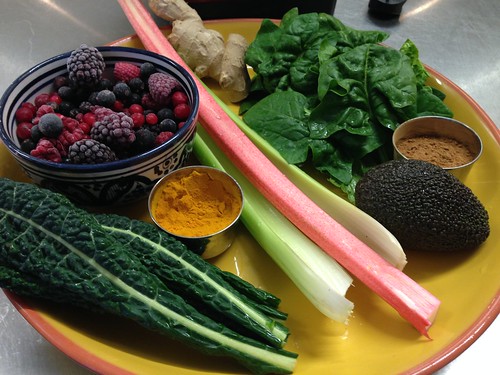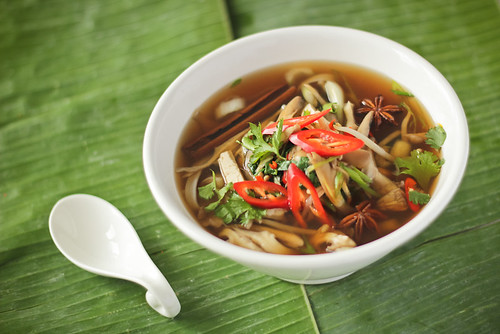Waste Not! 10 Ways to Reduce Food Waste
Happy Earth Day! Here are some tips from Rachel on how to help the environment and enjoy every last bit of veg!
We're heading into a time of plenty for gardeners, and nothing tastes better than freshly picked veggies. But with gluts of produce we have to find creative ways not to let this bounty go to waste. Even if you don't grow your own, it's easy to buy far too much at the supermarket. According to WRAP, the sustainability agency, households in the UK are still throwing away an astonishing 4.2 tonnes of household food and drink annually. For me, forward planning is the key to avoiding food waste. Having a plan for your extra veg bits is not only sensible, it can profoundly change the way you shop, prep, and cook.
Shopping
- To avoid over-buying, try shopping at a farmers market or signing up for a weekly veg box. Becoming invested in local seasonal produce will keep cooking interesting, so you don't get into a rut of making the same dishes. With a veg box, challenge yourself to use every last bit!
- Don't snub veg with leaves! Beetroot tops cook up like a very tasty spinach while carrot tops make a great pesto. If you do buy carrots with tops on, remove and use the carrot tops at once. Otherwise the leaves continue to take the goodness out of the roots and you end up with soft bendy carrots.
- To keep asparagus ends for stock and soup, you only need to cut off a tiny bit. Buy whole bunches, not just the tips, and avoid asparagus that has been flown from Peru. Especially at this time of year when local asparagus is growing up the road.

Preparing
- Don't let your veg go bad! The best place to store veg is in the cool and dark. Fridges are too cold for tomatoes and ruin their flavour.
- There is no need to peel veg if organic or home grown. With peeling you loose some of the nutrients and the skin is tasty. Even with squashes, you can slice with the peel on. It tastes great when roasted and you can also roast the seeds. Use the roasted seeds for snacks or garnish.
- You don't need to make every meal from scratch. When you're making a soup today, set aside some of the ingredients for a salad tomorrow. Your freezer is also great for stashing excess fresh vegetables as well as chopped ginger, spice pastes, stocks, and prepared meals.
- If the veg really isn't good enough to eat, then turn it into compost for the garden. I find the best compost makers are simple slatted wooden bins with lots of air. It’s best to have two, one to fill up and leave for a year, whilst you fill the next one up. Only put in raw veg, not cooked, as this attracts vermin, and always layer the veg with leaf mulch.
Frozen berries and bits of veg - greens, carrots, beetroot, etc. - are great for smoothies!
Cooking
- Nibble on broccoli stalks or cauliflower stalks, rather than throw them away. They have a crunchy apple taste and make interesting crudités or are lovely just dipped in a touch of Malden sea salt.
- Roast bits and bobs in an impromptu gratin! At the cookery school we like to layer them vertically so you wind up with lots of crispy edges and a beautiful display.
- Be creative with your veg gluts. It's fun! You can make fresh juices and smoothies for breakfast, preserve produce in jams and chutneys, or have a go at fermenting.
- One of my favourite ways to reduce waste is to make homemade vegetable stock using vegetables that are getting past their best. Stock is the secret to delicious dishes, particularly soups, risottos, paellas and stews. If you make lots of stock on a day when you have time and plenty of vegetables to use up, then freeze small quantities (about 500ml) in sealable freezer bags you’ll always have some ready when you need it.
Vegetable Stock
Dietary: Vegan, Gluten Free
Makes: Approx. 1 litre
Time: Prep 10min, Cook 1hr
Ingredients
- 1.5litres water
- 1 medium onion, quartered, skin left on
- 2 carrots, cut in halves
- 2 celery stalks, cut in halves
- 1/4 of a fennel bulb
- 2 bay leaves
- 4 parsley stems
- 8 whole black peppercorns
Method
- In a large saucepan put in all the ingredients, bring to the boil, turn down the heat and simmer gently until the vegetables are cooked and the stock has reduced by a third, which takes about 1 hour.
- Drain the stock into a heatproof bowl through a colander and discard the cooked vegetables. You will be left with golden, clear stock, which can be used immediately, will keep in the fridge for three days, or can be decanted into freezer bags and frozen.
Variations
- Add asparagus when in season as the stalks have a lovely rich taste. Try adding dried mushrooms and a variety of herbs. For Asian flavours add lemongrass, chilli and coriander.
- Do use: onions (keep the skin on for colour), celery, carrots, leeks, fennel, asparagus, dried porcini, peppercorns, bay leaves, parsley, thyme
- Don’t use: potatoes, peppers, cabbages, kale, cauliflower. They all have a bitter taste. And go easy on strong herbs such as rosemary and sage.





